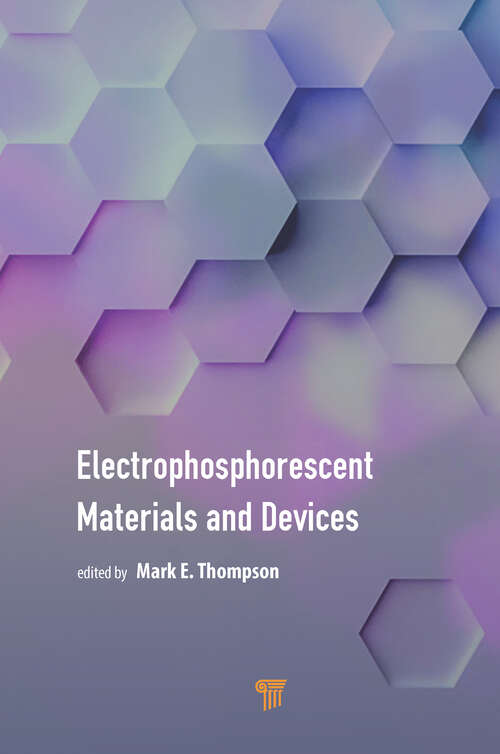Electrophosphorescent Materials and Devices
By:
Sign Up Now!
Already a Member? Log In
You must be logged into UK education collection to access this title.
Learn about membership options,
or view our freely available titles.
- Synopsis
- Organic LEDs (OLEDs) in mobile displays have been in large-scale production for over a decade, and OLED-based televisions are rapidly gaining traction in the marketplace. OLEDs are on the verge of entering the solid-state lighting market in a big way. The OLED technology gives higher color purity and is more efficient than any of the competing technologies. When produced at scale, OLEDs are also economical. A key limitation in the development of OLEDs was the efficient conversion of all of the electrical energy put into the device into light. Until the late 1990s, the maximum efficiency of OLEDs was limited to 25% (photons/electrons), but this limitation was removed and OLEDs with 100% efficiency were reported in the early 2000s. This advance in OLED technology was driven by the author of this book. He and his collaborators developed electrophosphorescence, which is essential in reaching the 100% efficiency that is now commonplace in commercial devices.
- Copyright:
- 2020
Book Details
- Book Quality:
- Publisher Quality
- Book Size:
- 1,082 Pages
- ISBN-13:
- 9781000172997
- Related ISBNs:
- 9789814877343, 9781003088721
- Publisher:
- Jenny Stanford Publishing
- Date of Addition:
- 12/13/23
- Copyrighted By:
- Jenny Stanford Publishing Pte. Ltd.
- Adult content:
- No
- Language:
- English
- Has Image Descriptions:
- No
- Categories:
- Nonfiction, Science, Technology
- Submitted By:
- Bookshare Staff
- Usage Restrictions:
- This is a copyrighted book.
- Edited by:
- Mark Thompson
